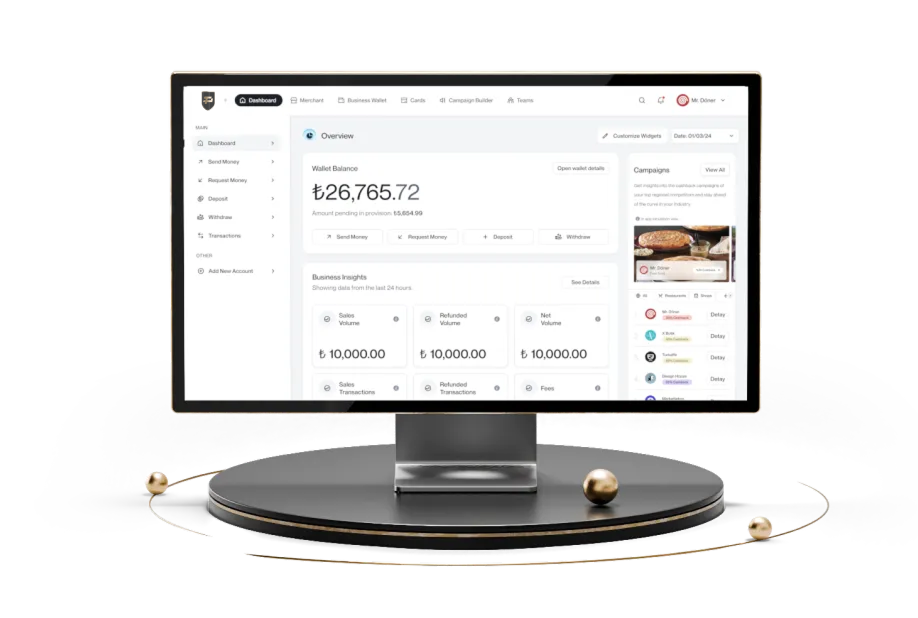What Is Compound Interest and How Is It Calculated?
Compound interest is one of the most effective ways for investors to grow their savings or investment value and for lenders to maximize their earnings. By calculating interest not only on the principal but also on accumulated interest, compound interest creates a financial force that multiplies over time. So, how exactly does compound interest work, why is it used, and how does it differ from other types of interest? Papel Blog answers all your questions.
What Is Compound Interest?
Compound interest is especially influential in long-term investments and loans, as it is based on the principle that at the end of each period, the earned interest is added to the principal, and in the next period, interest is calculated on this new total. This way, the initial principal and accumulated interest generate further returns, causing the investment or debt to grow exponentially over time.
H2: Why Is Compound Interest Used?
There are several reasons why compound interest is preferred in financial transactions and investments.
Why Investors Prefer It
Since the principal and accumulated interest are reinvested together, investments made with this method grow exponentially over time. The effect of compound interest becomes particularly noticeable in long-term investments, allowing investors to achieve higher returns. As a result, investors can reach their financial goals more quickly and effectively thanks to the compounding effect.
Why It Is Used in Loans
Lenders apply compound interest to increase the interest income from the loans they provide. This way, they collect interest not only on the principal but also on accumulated interest. Additionally, since compound interest causes debt to grow faster due to the accumulation of interest on both the principal and previously earned interest, it is a favorable method for lenders.
H2: How Is Compound Interest Calculated?
Since compound interest significantly impacts long-term investments and loans, it should be considered when making financial plans. As interest is periodically added to the principal, the growth rate of an investment or debt increases over time. To explain how compound interest is calculated, let's look at the formula.
Compound Interest Formula

Where:
A: The total amount (principal + interest) at the end of the term
P: Initial principal
r: Annual interest rate (in decimal form)
n: Number of times interest is applied per year
t: Total investment duration in years
For example, let's say you have 10,000 TL and want to invest it at a 10% interest rate for 2 years. At the end of the first year, your money grows to 10,000 × 1.10 = 11,000 TL; by the second year's end, it becomes 12,100 TL.
What Is the Difference Between Compound Interest and Simple Interest?
The primary difference between simple and compound interest methods in financial transactions is their calculation and application. In simple interest, the interest amount remains constant for each period, whereas in compound interest, interest is calculated on both the principal and the accumulated interest. Due to this, simple interest is more common for short-term transactions, while compound interest is preferred for long-term investments and loans because it results in higher returns or costs.
In simple interest, interest is only calculated on the principal, and the earned interest is not added to the principal at the end of each period. In compound interest, however, the earned interest is added to the principal, and interest is then calculated on this new total in the next period. Let's explain this with an example.
Assume you have an initial principal of 1,000 TL, with an annual interest rate of 10% for 3 years.
Simple Interest Calculation:
Annual Interest: 1,000 TL × 0.10 = 100 TL
Total Interest Over 3 Years: 100 TL × 3 = 300 TL
Total Amount at Maturity: 1,000 TL + 300 TL = 1,300 TL
Compound Interest Calculation:
End of Year 1: 1,000 TL × 1.10 = 1,100 TL
End of Year 2: 1,100 TL × 1.10 = 1,210 TL
End of Year 3: 1,210 TL × 1.10 = 1,331 TL
Total Amount at Maturity: 1,331 TL
For more information on interest rates, visit Papel Blog and check out our "Types of Interest" article.

H2: What Are the Advantages of Compound Interest?
Compound interest offers several advantages, making it an effective tool for long-term financial investments and savings. These advantages include:
Rapid Growth of Investments
By adding the earned interest to the principal at the end of each period, compound interest ensures that the next period's interest is calculated on a larger amount, allowing investments to grow exponentially.
Increasing Returns Over Time
As the investment period extends, the effect of compound interest becomes more significant. The accumulated interest is added to the principal over time, increasing total returns and making it easier for investors to reach their financial goals.
Mitigating the Effects of Inflation
The exponential growth of compound interest can help counteract factors that reduce wealth, such as inflation, which increases the cost of living and erodes purchasing power.
Reinvestment of Interest Earnings
By reinvesting earned interest into the principal, compound interest accelerates investment growth and maximizes total returns. This allows investors to make the most of their savings efficiently.
Sources: 1.
The information provided in this blog post is for general informational purposes only and does not constitute legal, financial, or investment advice. The content has been prepared for informational purposes only, and for specific situations, it is recommended to seek professional advice. The statements in this article do not create any obligations or liabilities and reflect only the author's assessments. Any decisions you make based on this information are solely your responsibility, and Papel Elektronik Para ve Ödeme Hizmetleri A.Ş. does not assume any liability in this regard.

